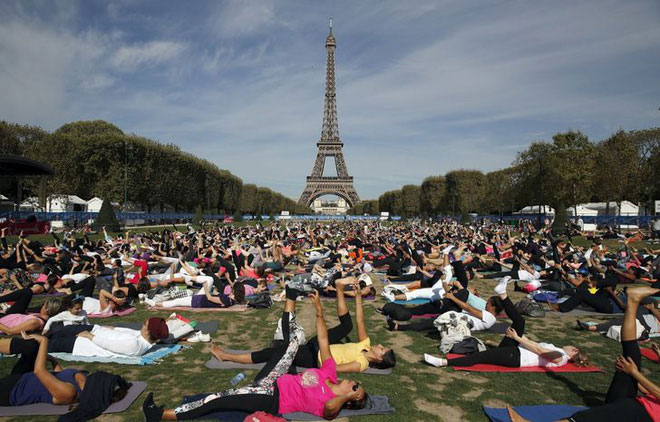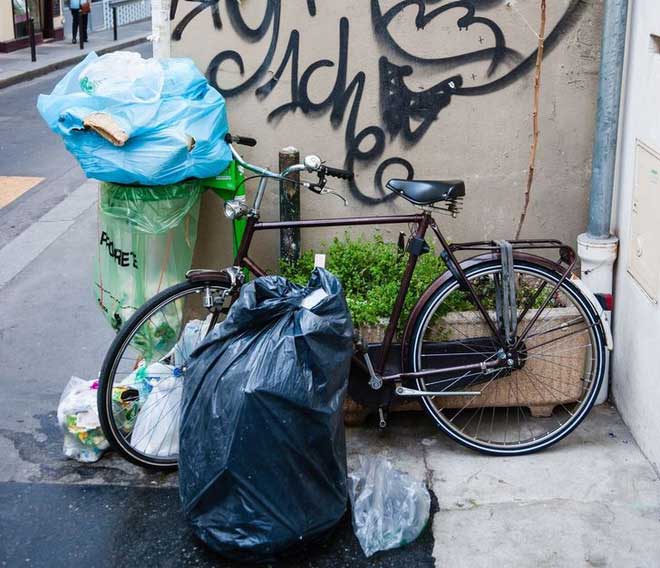Have you ever been so disappointed with your trip that you felt disheartened? There is a syndrome specifically for travelers who come to Paris and feel disillusioned, as the “City of Light” turns out to be less glamorous than they imagined.
Known as the City of Light, the capital of Paris is one of the most famous tourist destinations in France. Paris always exudes a luxurious, sophisticated beauty with its artistic architecture and exquisite, upscale cuisine. Tourists can visit the Arc de Triomphe, Notre-Dame Cathedral, the Eiffel Tower, the Picasso Museum, the Sacred Heart Basilica, or the Georges Pompidou Center, among many other attractive sites. However, for a small number of visitors, Paris becomes a nightmare as they fall victim to “Paris Syndrome.”
Little-known Facts About Paris Syndrome
What is Paris Syndrome?
Simply put, this syndrome affects those who realize that the capital of Paris (France) is not as they imagined through media and literature. In 1986, Professor Hiroaki Ota coined the term Paris Syndrome in his book of the same name, considering it one of the common psychological traumas that Japanese tourists experience when visiting France.
From 1998 to 2004, 63 Japanese patients were hospitalized due to this peculiar syndrome. After receiving treatment, the patients recovered quickly.
The subjects of this study were Japanese tourists, who were accustomed to an elegant lifestyle and expected similar experiences in the city they were visiting. During his time working in France, he witnessed them suffering severe stress after confronting the harsh realities of lifestyle, language, and culture in Paris—a cultural shock with excessively high expectations.

Common signs of Paris Syndrome include fear, anxiety, psychological trauma, and sometimes feeling mentally threatened. Less severe symptoms include discomfort, dizziness, and uncontrollable sweating. If these symptoms occur together without signs of relief, patients may even experience cardiac arrest.
Most psychologists agree that the best treatment for this syndrome is to return patients to their home country, accompanied by friends or family. However, those who are more severely affected may never return to Paris.
Why Are Tourists Disappointed with Paris?
Although this psychological phenomenon has diminished, partly due to the timely flow of information, the “wanderlust” community still has valid reasons to be disappointed with the city—potentially leading to Paris Syndrome. Here are some specifics:
1. Long Lines to the Eiffel Tower
The Eiffel Tower is the heart of Paris. Many tourists aspire to ascend to the highest observation deck to admire the magnificent capital. However, the long waiting lines and stringent security checks comparable to those at airports can consume a lot of time.
After all those difficulties, you might want to relax and have a picnic on the lush green grass in front of the tower. But don’t celebrate too soon; there’s a good chance you won’t even have a spot if there are pre-booked events. Moreover, the grass outside is often not as vibrant as you might imagine, frequently wilting, and in some areas, grass simply won’t grow.
A similar situation occurs at the Louvre Museum. If you don’t book tickets in advance, you may have to wait so long that once you’re inside, you forget why you came.
2. Everyone Wants to See the Mona Lisa

The mysterious smile of the Mona Lisa is something everyone at the Louvre wants to behold at least once. However, since everyone wants to get close to her, chaos is bound to ensue, which can be quite exhausting.
Don’t just focus on Leonardo da Vinci’s iconic painting. The Louvre has a massive collection of artworks waiting for you to explore. The architecture and interior of the museum are already magnificent.
3. Not All French Women Are Movie Stars
Movies have led us to believe that French girls wearing berets are everywhere, always dressed in bespoke outfits, glowing regardless of the circumstances. However, in Paris, it’s not hard to find girls dressed casually, without makeup or manicured nails. By the age of 50, their fashion sense and appearance change significantly, becoming true models of elegance for women to emulate.
4. Expensive Dining

How can you tell how upscale a restaurant is? It’s simple: the less food you get, the higher the price, indicating that the restaurant is quite famous. However, for many, dining like this can feel quite “bitter,” as their wallets lighten while their stomachs remain empty.
5. The French Aren’t as Elegant as You Think
Even Parisians aren’t accustomed to the public urination spots right on the streets. Not actual restrooms, these “flood relief” booths appeared in 2018 to help keep the streets cleaner. However, they might just detract from the city’s elegance.
6. A Lot of Trash

Paris has a significant trash problem, with countless piles of garbage lining the streets. If you want to stroll without encountering such sights, opt for early morning—the time when the city has just been cleaned up.
7. Few Places Speak English
The French speak English reasonably well, but they don’t often use the language. In restaurants, it’s common to find staff who either don’t speak English or speak it poorly. Menus are often only in French, which can be a real challenge for those who don’t know the language.
8. Safety Concerns
In the wave of dense immigration, it’s not uncommon to see people bothering tourists, selling trinkets, and getting angry if customers refuse to buy.
Like many other tourist destinations, Paris promotes an image that is somewhat more glamorous than reality. The city’s rich history and culture put pressure on Paris to maintain its status as a “star student” that must always perform well. Russian writer Mikhail German once said: “Paris is so great that so many generations have loved it, even if they are not aware of it.”
Cultural shock is inevitable. However, experts also believe that Paris Syndrome can be prevented if travelers possess an understanding and acceptance of the less appealing aspects of this destination.



















































